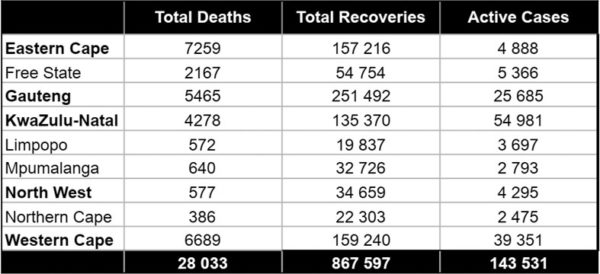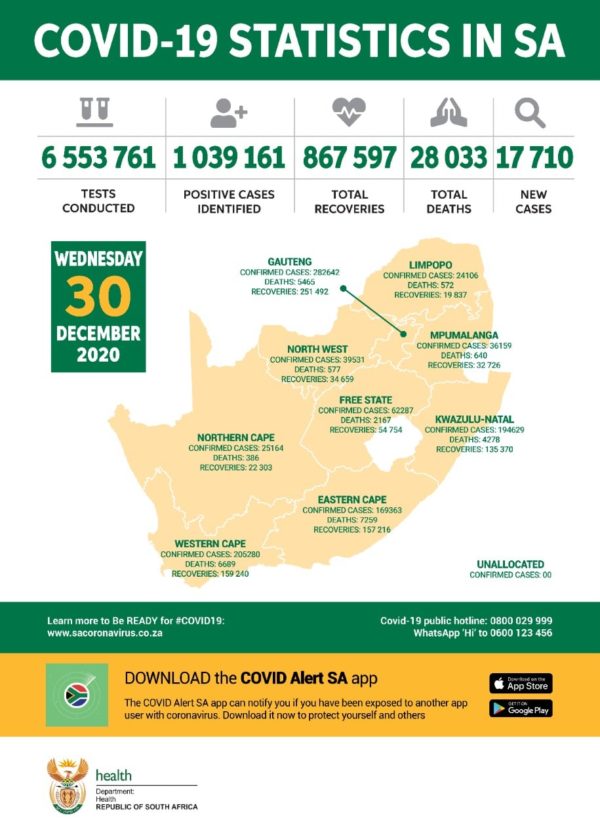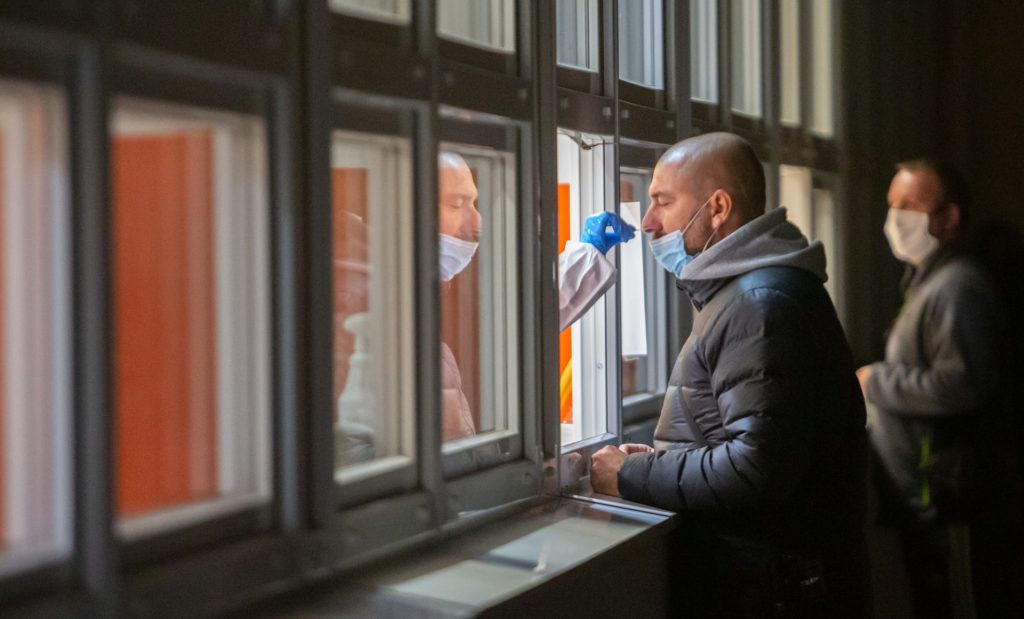South Africa recorded 17 710 confirmed cases of COVID-19 on Wednesday, December 30. This is the highest number of new cases the country has added on a single day.
The positivity rate of testing stands at 33%, which Dr Zweli Mkhize says “remains of major concern”, as it is an indication of how rapidly the virus is spreading. Since the last report, 53 279 new tests were conducted.
South Africa reached one-million cumulative cases of COVID-19 on December 27 and has added nearly 40 000 cases since then – the number of cumulative cases now stands at 1 039 161 with a recovery rate of 83%.
“Regrettably, 465 more COVID-19 deaths have been reported,” said Mkhize.
In the Western Cape, 165 South Africans succumbed to complications from the virus, 144 in KwaZulu-Natal, 88 in the Eastern Cape, 41 in Gauteng, 16 in Limpopo, and 7 in the Northern Cape.
The overall death toll now stands at 28 033.

The Western Cape has 39 351 active cases and 3 380 hospitalisations (as of 1pm on December 30), 372 of which are receiving high care or are in intensive care units.
“The resurgence of COVID-19 in the province has resulted in higher active case numbers, hospitalisations and daily deaths than we experienced at the peak of the first wave,” said Western Cape Premier Alan Winde, in a statement.
He said, people with COVID-19 and people under investigation for the virus currently occupy 40% of hospital capacity in both the metro and rural regions of the province.
The province will soon have added 744 hospital beds into the healthcare system, which will be distributed as follows:
- 336 beds at the Hospital of Hope (Brackengate)
- 60 beds at the Freesia Ward in Mitchell’s Plan
- 30 beds at Ward 99 in Mitchell’s Plain
- 187 beds at the Aquarius Ward in Mitchell’s Plain
- 59 beds at the Sonstraal Hospital in Drakenstein
- 72 beds in Vredendal, Hermanus and George
Winde said the province has the ability to supplement these beds with an additional 136 beds if need be and there are sufficient health workers available.
In total, the province is scaling up to a capacity of 880 beds, which is more than the CTICC field hospital could hold in the first wave.
The province is also expanding its healthcare workforce by recruiting 1300 healthcare workers – 44% of these will come from extensions of existing short-term contracts and the remaining 56% will be recruited and appointed.
“We have received over 500 applications as part of this recruitment drive and a dedicated team have been working throughout this festive period, contacting applicants to determine their availability and channelling information to the appropriate regions and districts for immediate placement,” said Winde.

Picture: Pixabay

